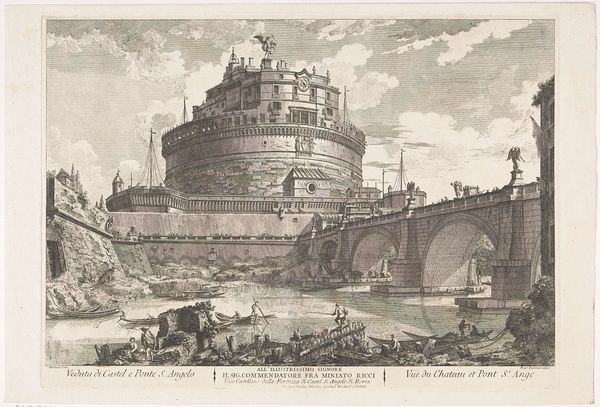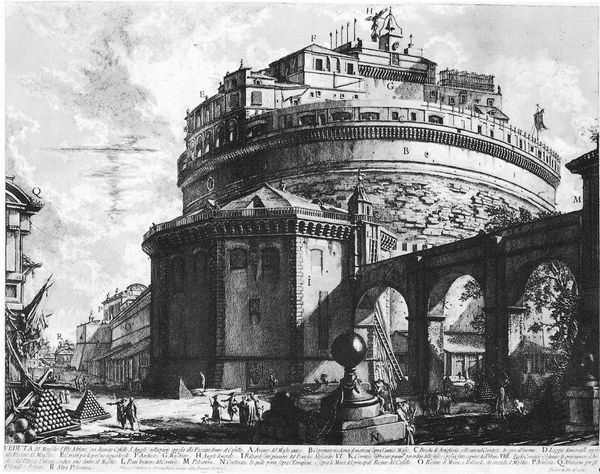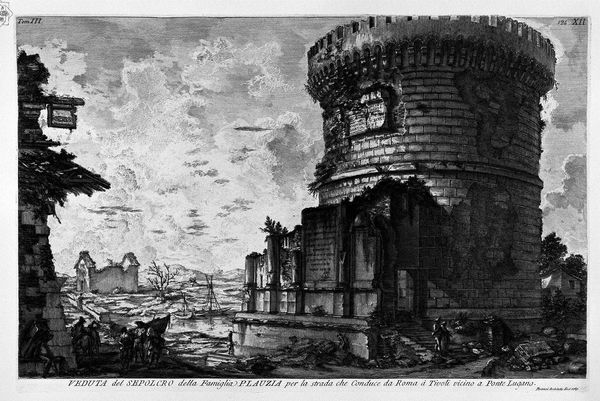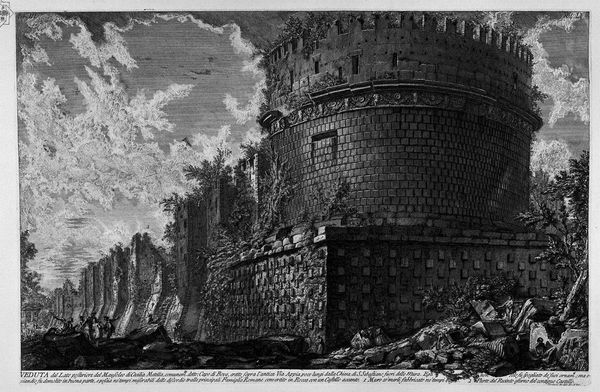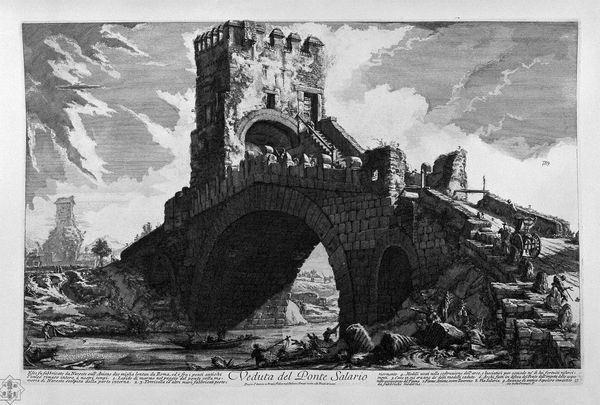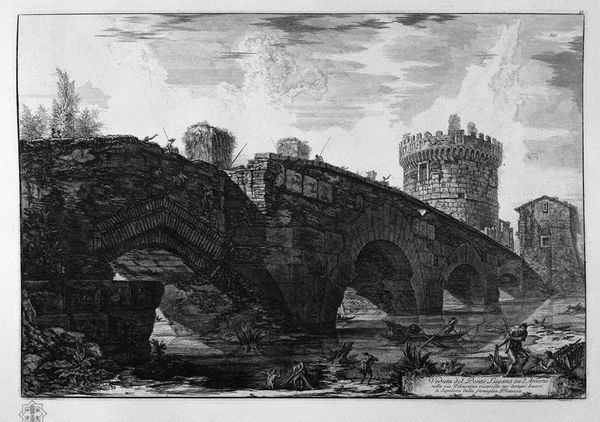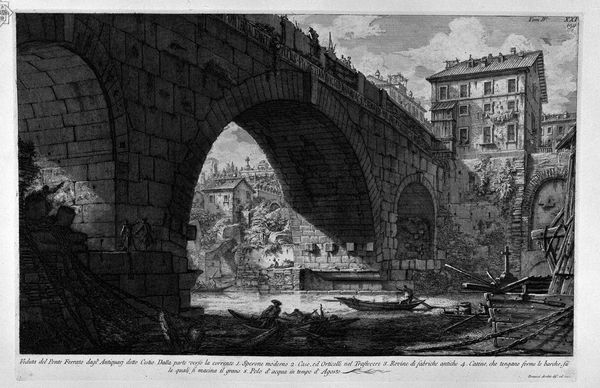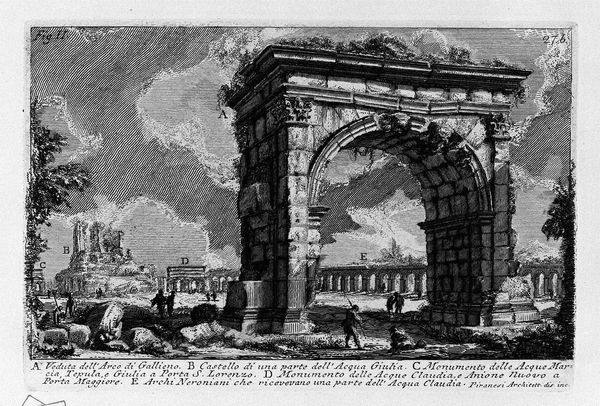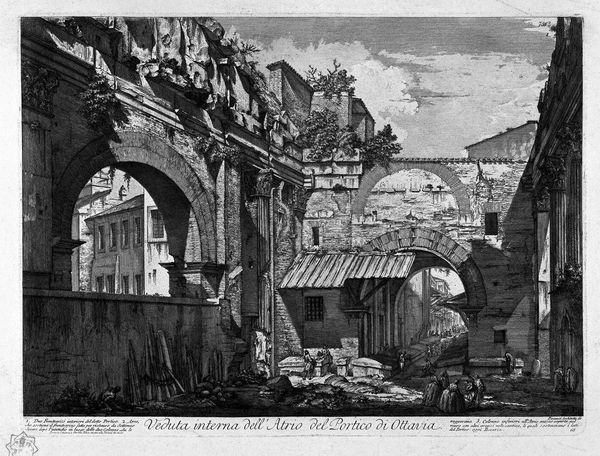
The Roman antiquities, t. 4, Plate III. Table of Contents Volume in this quarter.
0:00
0:00
print, etching, engraving, architecture
#
baroque
# print
#
etching
#
perspective
#
form
#
romanesque
#
ancient-mediterranean
#
column
#
black and white
#
line
#
cityscape
#
history-painting
#
engraving
#
architecture
#
realism
Copyright: Public domain
This is Giovanni Battista Piranesi's "The Roman Antiquities," an etching, showcasing the Castel Sant'Angelo and the Ponte Sant'Angelo in Rome. Piranesi, living from 1720 to 1778, created this during a time when Europe was rediscovering its classical past, fueling both artistic inspiration and colonial ambitions. Piranesi wasn't just documenting Rome; he was reimagining it. Notice how the figures in the foreground are dwarfed by the architecture, emphasizing the grandeur, and perhaps, the might of Rome. The play of light and shadow adds drama, evoking a sense of sublime power. Piranesi was deeply invested in the aesthetics of ruins, a taste that romanticized the past. But let’s ask, whose past? Rome's grandeur was built on empire, on the backs of enslaved peoples and colonized lands. Piranesi’s Rome, therefore, is a complex symbol, fraught with histories of power and exclusion. This piece captures not just a place, but a set of ideas about history, power, and identity that continue to shape our world.
Comments
No comments
Be the first to comment and join the conversation on the ultimate creative platform.
